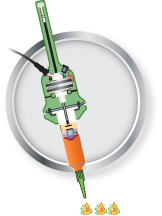When joining materials in a manufacturing facility, using adhesive technologies is the most efficient process because there are many disadvantages to the alternative techniques. For example, mechanical fastening involves creating holes which can weaken the material and thermal bonding heats the material, which can alter its properties.
The benefits of using adhesive technologies in processing are well documented and enable manufacturing innovation. Benefits of using adhesive technologies include the following:
Join Different Materials
New materials are continually being developed, which poses a major threat to traditional joining methods. Adhesives are able to join different materials while ensuring that each material retains its functionality. This is one of the many benefits of using adhesives in manufacturing.
More Cost Effective
Manufacturers must ensure that they are improving productivity in order to reduce costs in their facility. Because using adhesives eliminates issues associated with other joining methods, such as re-work that may be necessary after using a thermal bonding process, the process is simplified and cycle times are faster which results in cost savings. In shipbuilding, for example,the inside decks can be bonded into the primary structure with adhesive, eliminating time-consuming straightening work that would be required if the inside decks were attached by welding.
Improved Design
Because there is more flexibility in materials used when using adhesive technologies, it means that the aesthetics and functionality of the product can be improved as well. An exampleof a specific application is adhesives used in the installation of hurricane impact and bomb blast resistant window systems. Before sealants, this was not achievable.
Safety and Strength
Bonded structures are often citedas safer as the occurrence of fatigue cracks are reduced through the uniform distribution of stress concentration. Bond lines are also frequently described as crack formation stoppers. Because there are no holes, rivets or fastening elements that weaken structures involved, adhesives also facilitate the integrity and strength of materials.
Due to its many benefits, adhesives are facilitating innovation and playing an increasing role in a number of sectors. A recent example includes rail bonding applications across Europe’s railways. Four main types of structural adhesives are used for all segments of the rail market – from high-speed trains, mainline, regional, metro, suburban and freight trains, as well as the infrastructure around them.
This is part of a production process improvement initiative developed to emphasize rail as a key mode of transportation in the face of rising road congestion, demand for mobility and concerns over climate change. For more information about this, contact Fishman Corporation.
